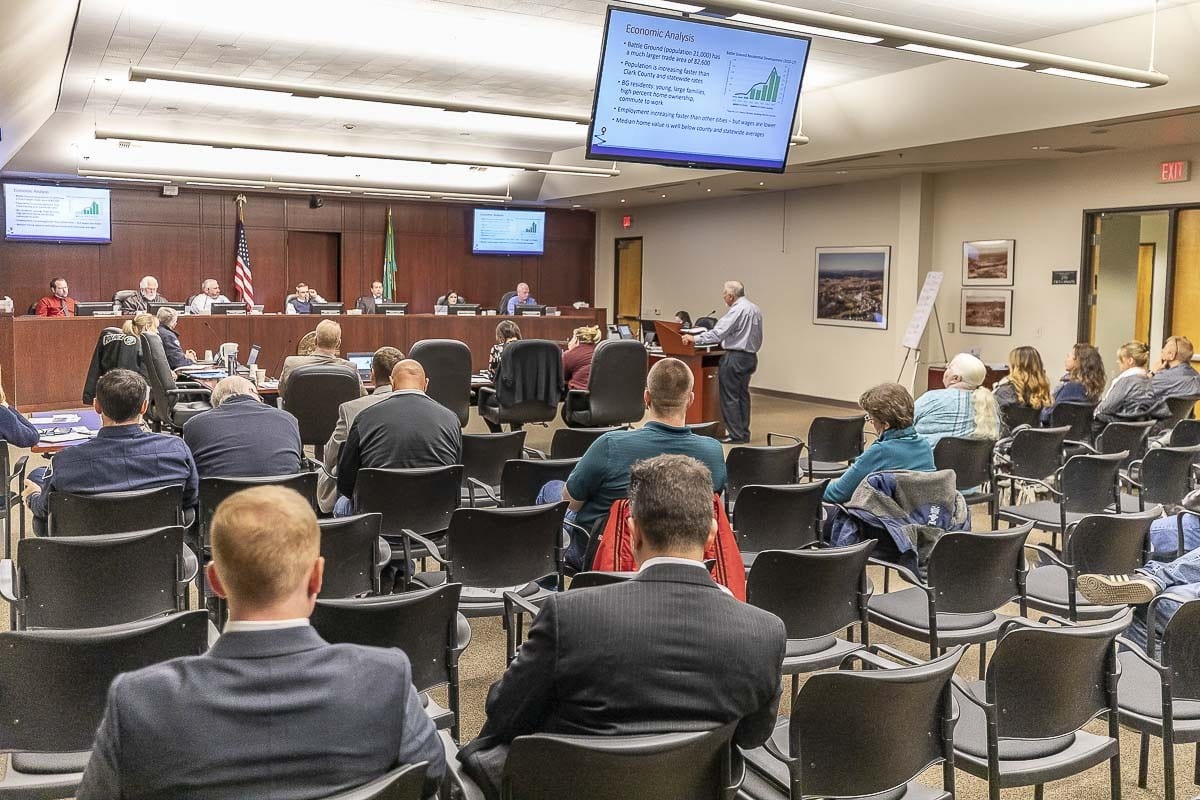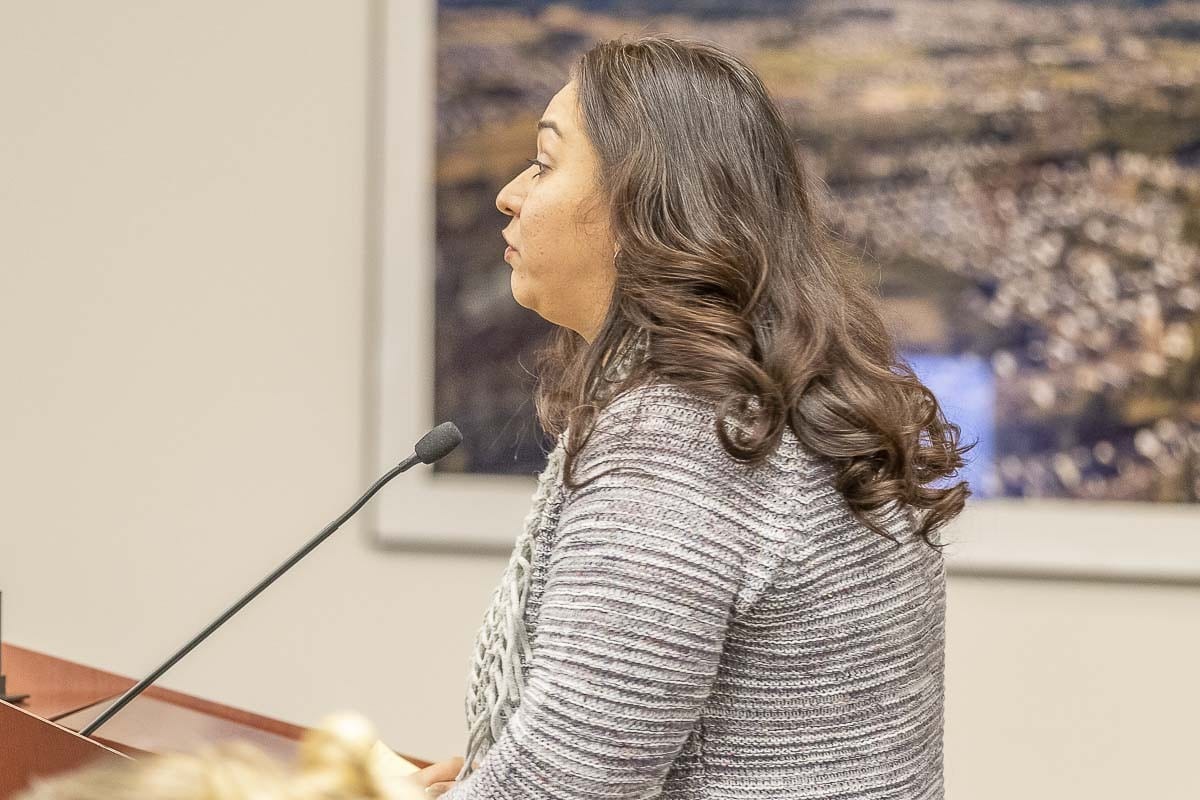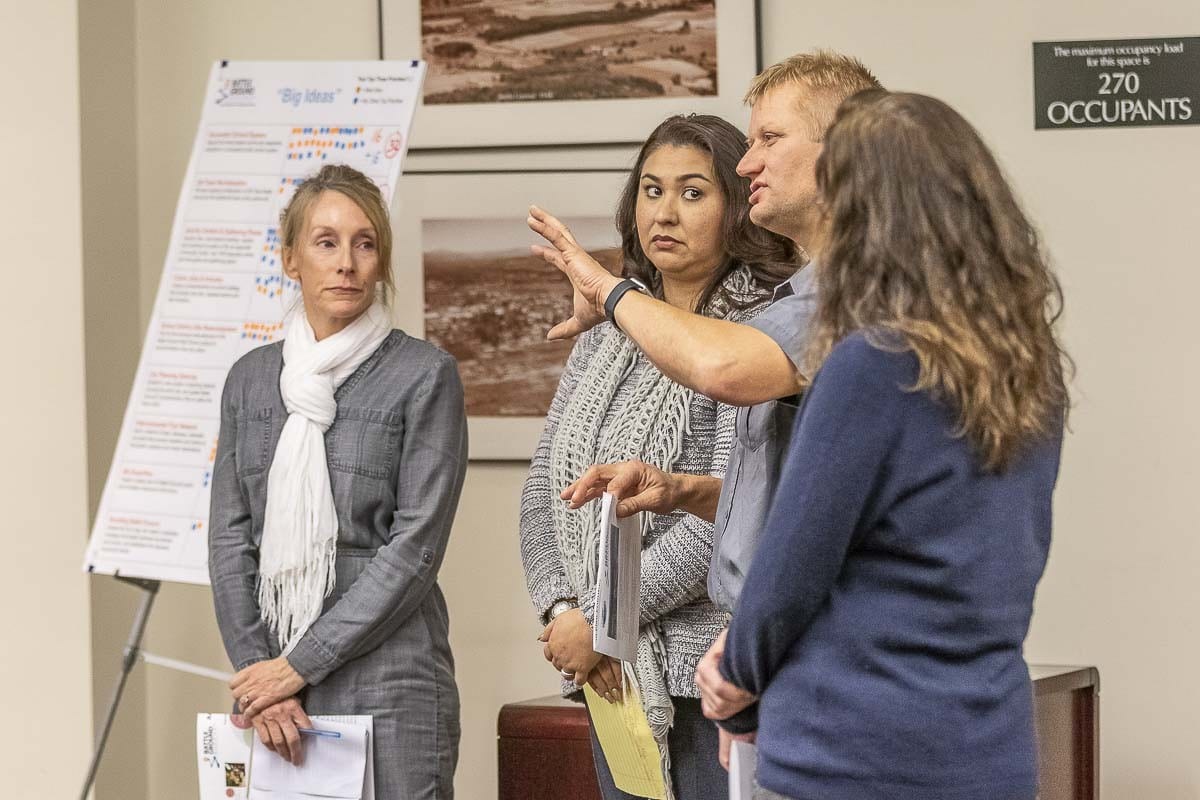The group tasked with the city’s roadmap project will remain involved, but has largely wrapped up their work
BATTLE GROUND — It’s the end of the road for The Navigators. At least for some of them. The group of 12 Battle Ground community members handed off months worth of work to the city council this week, which will take over the next steps in the city’s first major visioning project in nearly a decade.

“The idea with all of this was to kind of quantify everything, and create that buy-in in the community about this is who we are and where we’d like to go,” said Battle Ground Mayor Mike Dalesandro. “And then, for this council to start that process and for subsequent councils down the road to keep working toward some of these very long-term goals.”
The Battle Ground Roadmap project began earlier this year with the formation of The Navigators, and included a survey of more than 2,000 Battle Ground area residents, the vast majority of whom said they wanted to see the city pursue an approach dubbed Town & Country.
At a public open house last month, more than 60 residents shared their thoughts about what next steps they felt the city should pursue. That included a successful school system, revitalized Old Town, more green spaces, and the pursuit of more activity centers and gathering spaces, such as a long hoped-for YMCA location in Battle Ground.
Deputy Mayor Shane Bowman said he appreciates the work of the visioning committee, but wonders if there might be a question not being asked of the community.
“We ask ‘what do you guys want?’” Bowman said, “but we never ask ‘how much are you willing to pay for it?’
“There is a battle that goes on in Battle Ground, it just didn’t happen a hundred years ago. It happens on Facebook constantly,” Bowman continued. “So we, as a city, we put this task force together and we let you guys go with this, and we’ve gotten great results out of it. But so many people in our community think the city has money to do whatever we need to do … back in 2000 they had a lot more money and they were able to do some of this stuff.”

Dalesandro said there are elements of the Navigators’ work that can be implemented more quickly, but many of the goals will take years or decades. He said that means this will be a project that will require some patience and dedication.
“How do we keep that energy level up that we’re working on this and it’s not just a stack of papers in a binder on a shelf, but we’re actually continuing to work on this and keeping that message going out there,” said Dalesandro.
Battle Ground Community Development Director Erin Erdman said one suggestion is to create a volunteer committee, potentially made up of some of the existing Navigator members, to meet once or a twice a year to examine whether the city is moving towards the goals outlined in the visioning project.
As for concrete next steps, the city is gearing up for two comprehensive studies. One will look at land use and zoning, and another will examine park planning and facilities development.
“I think out of this land use study we can wrap some of that district planning and identifying some of those into that phase,” said Erdman, “and then really focusing in on design aspects and more on the subarea.”
If that sounds like community planning nerd-speak, Dalesandro says he’s OK with that.
“The policy nerd in me is excited about all the stuff we get to work on when it comes to planning districts and all that,” he says.
That redistricting is one area city council members could get to work on quickly. The idea would be to create specific overlays, and to create neighborhood identity. That could be the single most impactful move the current council could make now to set the path for the future.

Future job growth a challenge for Battle Ground
Since it was incorporated in 1951, population growth in Battle Ground has outpaced Clark County at large. Since 2010, Battle Ground has seen 2.2 percent population growth annually, compared to 1.5 percent in Clark County and 1.3 percent for the state as a whole. As of 2018, the city is home to nearly 21,000 people, although the total population in the Battle Ground and Hockinson school districts is closer to 83,000.
Job growth in Battle Ground has also outpaced other local cities, with the exception of Camas, but many of those have been low wage retail sector jobs. One of the challenges facing planners will be to enact the community’s desire for a town and country feel, while still finding a way to attract living wage jobs outside of the retail sector. One company Bowman suggested going after is Columbia Sportswear, which is known to be unhappy with its location in downtown Portland and looking to relocate.
Currently, the vast majority of Battle Ground residents commute outside of the city for work. The effort to change that faces challenges, especially in a lack of development-ready land. Current development focuses largely on retail and hospitality sector jobs, which are not in line with sectors targeted by the Columbia River Economic Development Council (CREDC), which include high tech, clean tech, software development, and life sciences. Those are industries that Ridgefield is hoping to court through development of a dark fiber network, and new developments at the Port of Ridgefield and The Junction at I-5.
One sector of opportunity for Battle Ground may lie in its position along the SR-503 and SR-502 interchange. As Councilor Philip Johnson mentioned, many people pass through Battle Ground on their way to outdoor recreation areas, including Lake Merwin and Cougar. The hope might be to attract outdoor retail development, designed to cater to people using the area as a corridor to Southwest Washington’s outdoor recreation areas.
The long-term question may be whether people who call Battle Ground home are happy with commuting half an hour or more for work, in exchange for living in a place with abundant places to shop, eat, and enjoy time outdoors. If so, residents may need to accept the fact that the city will likely have less revenue with which to work, due to the lack of industrial and commercial development.
For more on the deep analysis done as part of the Battle Ground Roadmap project, click here.




